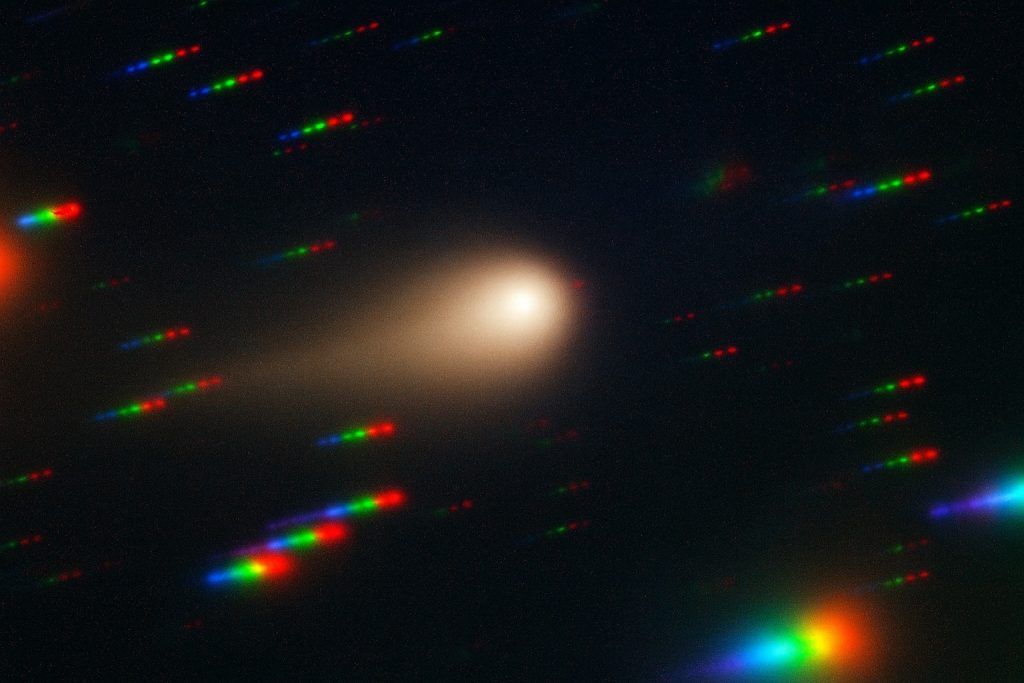28-10-2025
Today, 28th October 2025, marks a significant and potentially dramatic moment in the annals of astronomical observation. Comet 3I/ATLAS, only the third confirmed interstellar object ever detected within our solar system, is reaching its perihelion—the point in its orbit closest to the Sun. This celestial event, scheduled for approximately 18:45 Universal Time (UTC), is being watched with a mixture of intense scientific excitement and profound caution, the latter driven by a stark warning from a prominent Harvard scientist. The central question gripping the astronomical community is whether the comet’s close encounter with the Sun’s intense heat will trigger a massive outburst of activity, a possibility that carries both scientific opportunity and hypothetical risk.
Discovered in 2023 by the Asteroid Terrestrial-impact Last Alert System (ATLAS), Comet 3I/ATLAS immediately captured global attention due to its hyperbolic orbit, a mathematical confirmation that it did not originate in our solar system. It is a true voyager from the depths of interstellar space, a frozen relic from another star system now passing through our own. The comet’s interstellar nature is its most defining characteristic, offering an unprecedented opportunity to study the composition of planetary building blocks from a distant stellar system. Unlike ‘Oumuamua in 2017 and Comet 2I/Borisov in 2019, 3I/ATLAS has arrived on a trajectory that brings it exceptionally close to the Sun, setting the stage for its current, highly anticipated activity.
The scientific community is poised with a global array of telescopes, including the Hubble Space Telescope and the James Webb Space Telescope, trained on the comet. The primary goal is to analyze the gases and dust released as the comet heats up. By studying the chemical fingerprints in its coma—the cloud of gas and dust surrounding the nucleus—scientists hope to determine the comet’s composition and compare it with native solar system comets. This comparative analysis could reveal fundamental differences in the chemistry of other star systems or surprising similarities, reshaping our understanding of planetary formation across the galaxy. Dr. Amara Thornton, a planetary scientist at JPL, stated, “This is a once-in-a-lifetime chance to perform a ‘lab test’ on a piece of another solar system. The data we collect today could answer questions we haven’t even thought to ask yet.”
However, this wave of scientific optimism is tempered by a serious and widely publicized caution from Dr. Julian Beckett, a renowned astrophysicist at the Harvard-Smithsonian Center for Astrophysics. Dr. Beckett’s “big warning” does not concern the comet impacting Earth—its trajectory is known to be safe and poses no collision risk. Instead, his concern revolves around the potential for a “catastrophic disintegration event.” As the comet, a body of unknown structural integrity, is subjected to extreme thermal stress from the Sun, it could fragment violently. Dr. Beckett’s primary concern is that a major disruption of the comet could create a vast and unpredictable debris field, populated with fragments ranging from dust-sized particles to potentially hazardous larger boulders. In a recent paper and a series of media interviews, he elaborated, “We are dealing with a complete unknown. The tensile strength of this interstellar object is an enigma. If it undergoes a spontaneous, explosive disruption at perihelion, the resulting cloud of high-velocity debris, while not a threat to Earth itself, could pose a non-zero risk to the invaluable infrastructure we have in Earth’s orbit and in the inner solar system.”
This scenario, while considered low-probability by many, highlights a critical vulnerability. Our modern civilization relies heavily on satellites in Geostationary Orbit (GEO) and Medium Earth Orbit (MEO) for communications, navigation, and weather monitoring. A sudden shower of high-velocity cometary fragments, even small ones, could have devastating consequences for satellites, potentially causing a cascade of collisions known as the Kessler Syndrome. Dr. Beckett was unequivocal in his assessment: “We must not be complacent. The potential for a cascading collision scenario in a heavily used orbital belt, triggered by an artificial event, is a known space security concern. We are now contemplating a natural trigger. The probability is low, but the impact would be extraordinarily high. We are monitoring the situation with the utmost vigilance.”
As of 12:00 UTC on this date, initial data from solar observatories indicates that Comet 3I/ATLAS is already showing signs of significant activity. Its brightness has increased exponentially, and a prominent tail of ionized gas, stretching millions of kilometers, is visible to specialized instruments. The critical moment will come in the hours following perihelion, when scientists will be looking for any tell-tale signs of instability in the comet’s nucleus. The key period for monitoring potential fragmentation will be over the next 48 to 72 hours, as the comet begins its journey back out into interstellar space.




